Spoiler-Free Assessment Of Haruki Murakami's Book 1Q84
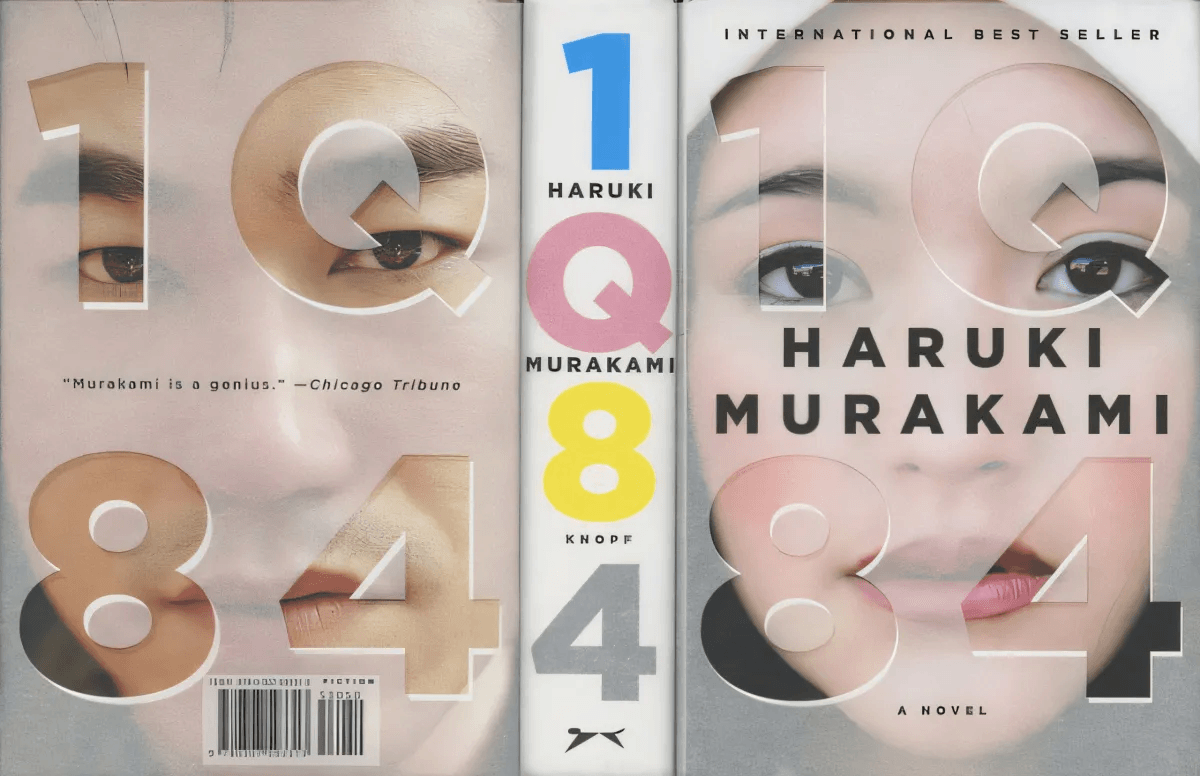
Why People Read Haruki Murakami
Japanese author Haruki Murakami is one of the most beloved writers of the last 20 years in any country. Though he has plenty of amazing books in his catalog, many consider his 2011 magical realist novel, 1Q84 his best. Featuring a dual storyline involving alternate timelines taking place in 1984, the book is a clever fantasy entry and praised the whole world over.
Haruki Murakami's book 1Q84 was released in three volumes from 2009 to 2010, with english releases in 2011. It widely regarded as his best novel, and features magical realism and an alternate timeline story taking place in Tokyo in 1984.
Haruki Murakami is known for his understanding of Western culture, and it is perhaps this attention to detail that makes his books so compelling. He had said his main influence is Kurt Vonnegut, and given that author’s appetite for science fiction in his otherwise totally realistic novels, it is easy to see the connection between the two.
Murakami’s parents were both teachers of literature and he was born in the post-WWII period of Occupied Japan. He, much like Japan after the war, had a stiff obsession with Americana.
In his home country, Murakami has taken criticism from the Japanese government, which calls his work “un-Japanese”. This is to say his work does not evoke a sense of nationalism or anything remotely resembling other traditionally successful Japanese writers.
Throughout his career, he has done very well. His 1987 book Norwegian Wood, a play on the Beatles song, is a sad tale about the struggle of mental health between young adults. A film adaptation was released in 2010.
After Norwegian Wood, he released The Wind-Up Bird Chronicle, to critical acclaim and monumental success. It is a story about a man whose wife goes missing and it discusses the boredom of our modern age. A live production of this novel, created by Stephen Earnhart, premiered at the Edinburgh International Festival in 2011.
Next, Murakami dropped his most well-known book, Kafka, on the Shore. The book featured magical realism and a man with an odd relationship to cats. The New York Times named it one of the “Top 10 Best Books of 2005” in their year-end issue.
If you have seen Netflix’s cute Christmas series Dash & Lily, you might remember lead actor Austin Abrams listing Kafka on the Shore alongside J.D. Salinger’s Franny and Zoey as his two favorite books of all time.
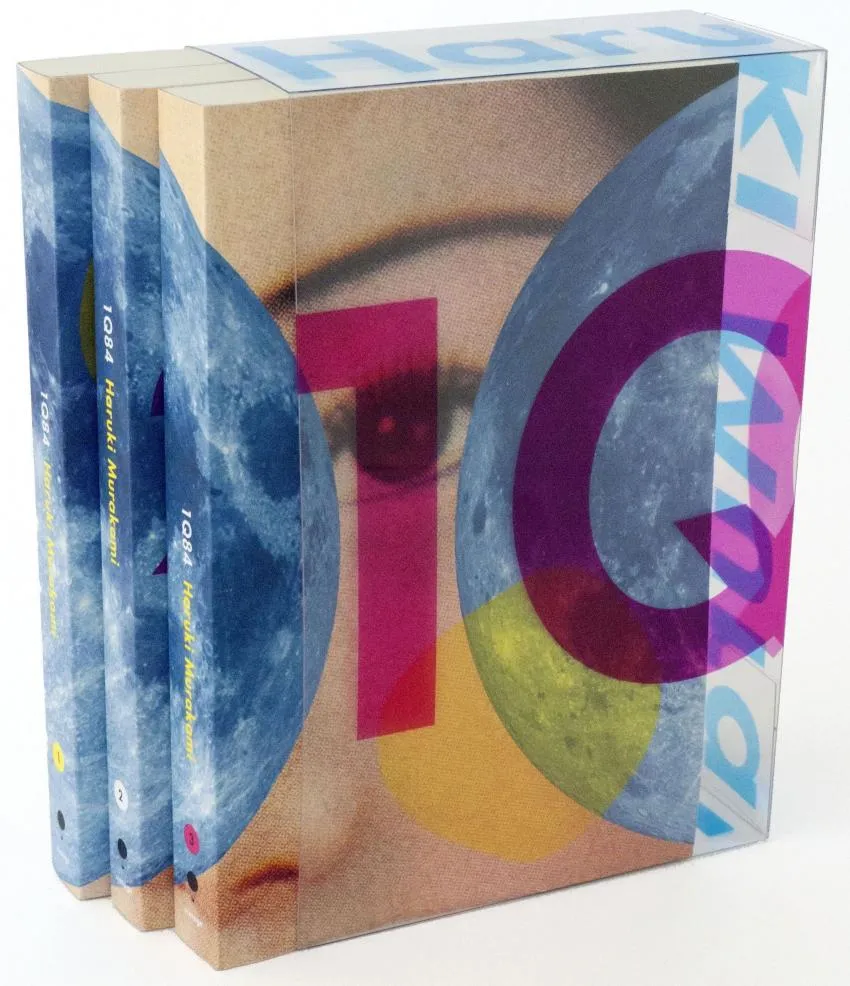
The 1Q84 Trilogy
Though released in English as one book, totaling over 900 pages, 1Q84 was actually portioned into 3 separate installments in its native language of Japanese. Following an anime-style rollout, it was released in 3 volumes from 2009 to 2010.
With this in mind, 1Q84 is considered one book. After its success, both critically and among fans of Murakami, the book has earned itself a special place in the hearts of fiction readers all around the world. Sam Anderson of The New York Times Magazine called it "A grand, third-person, all-encompassing mega novel." He also said other very celebratory things.
David L. Ulin of The Los Angeles Times noted 1Q84 was "A vision and an act of the imagination." On the other hand, it is only fair to mention that some critics found the massive book disappointing. In a well-known critique he did for The Atlantic, Allen Berra said, " [1Q84] was a big disappointment after years of hype."
Still, the novel has millions of more fans than detractors. The fantastical story of two main characters, both around age 30, is placed against the backdrop of two intersecting timelines in 1984. Our two protagonists are Aomame and Tengo. They exist together in this alternating timeline in 1984.
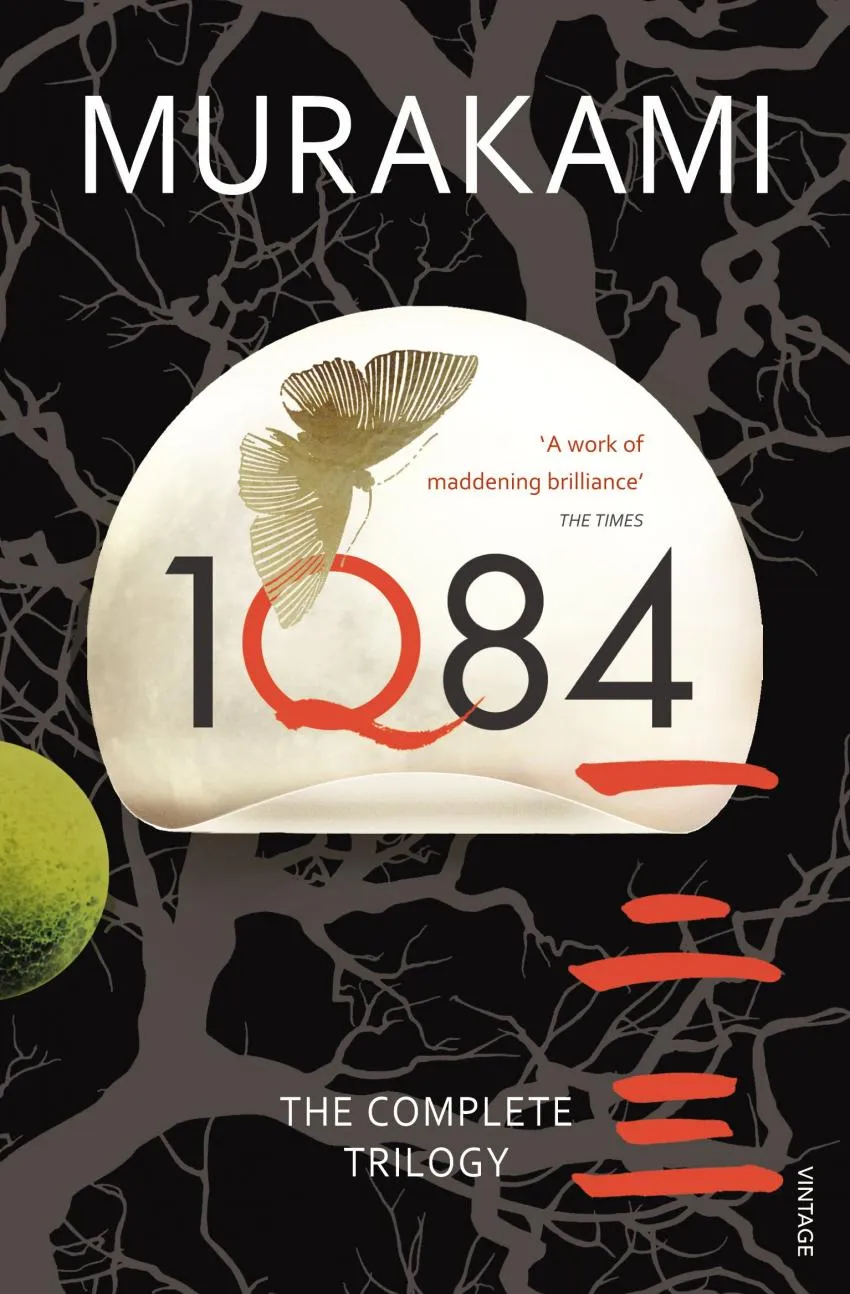
1Q84 Meaning
1Q84 refers to several cultural allusions as well as giving us a setting for the book. The title is a callback to George Orwell’s groundbreaking dystopian novel 1984. There is also Japanese wordplay being used here as well. A line is drawn between the letter Q and the Japanese symbol 九, which means “9”.
Therefore 1Q84 is a title that lets us know about the book’s time period as well as what the writer intends to show us with his work. Based on the nod to Orwell, we can expect science fiction and alternate history ideas.
Considering Haruki Murakami’s work and his fondness for clever titles, it is easy to see why this is one of his best. With only the title as a guide, the book’s first printing sold out on the first day of release. Within a month, sales climbed to over one million copies sold.
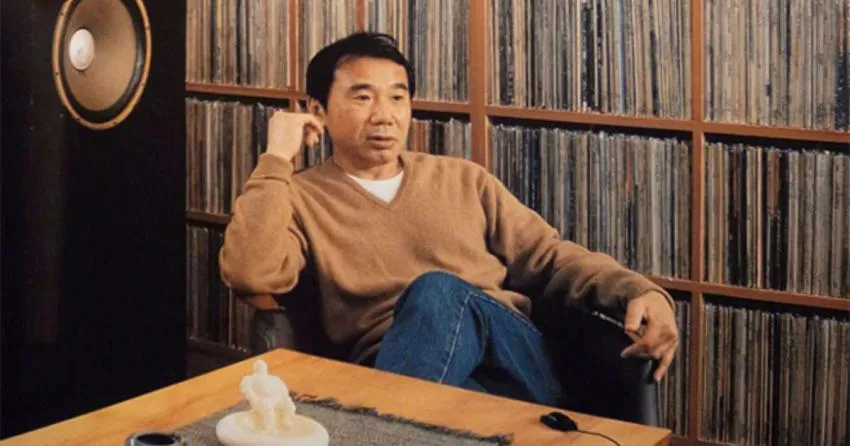
Read 1Q84 Online
While this book is available in hardcover and paperback, you can also get a boxed set of the original three volumes. They come in a clear collector case with special artwork. If you are more into audiobooks, check out the Audible version of 1Q84.
I am lucky that my job allows me to listen to headphones while I work, as this allows me to catch up on my reading. I first listened to this book at work and the multiple actors and actresses used for the production make it feel immersive and real.
Allison Hiroto speaks for Aomame, and she does a great job of putting the character into our own mind’s stories. She speaks calmly and with grace and poise, exactly how Aomame wishes to portray herself.
If you’re looking for an enjoyable reading experience to devour this mammoth 900-page novel, then consider listening to it on Audible.
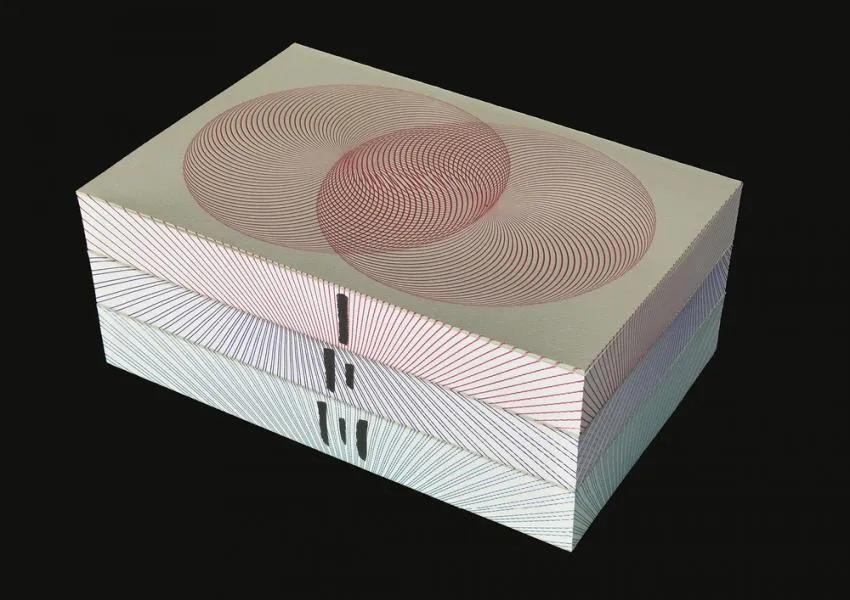
Will There Be a 1Q84 Movie?
The short answer here is no. The audio version of the book is over 40 hours long and is as much a theatrical performance as any movie is. The story arcs clash and they are thoroughly thought out. To condense that much material into 2-3 hours of the film would be a daunting task.
However, many fans of the novel push for a film to be made so they can see one of their favorite stories acted out on the big screen. It is easy to sympathize with them.
1Q84 is a novel with a beautiful set piece in the city of Tokyo. Colorful cultural references to automobiles of the 1980s as well as cash culture and jazz music are made throughout the book. It has action scenes as well, and it would certainly be a thrilling adaptation.
The main problem is the length, as this would be a hard film to make properly. Consequently, no studio is willing to invest the hundreds of millions of dollars it would require to even attempt this mighty feat. But there is still hope, in our current era of streaming.
Since streaming is so popular these days, it would not shock me to see a series about this book. Perhaps three seasons, one for each volume, would be an appropriate amount of time. That would allow almost 30 hours of material from 1Q84 to making it in.
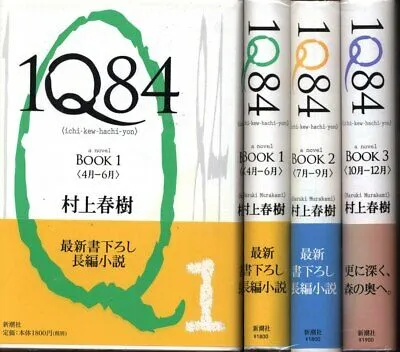
Book 1 of 1Q84
As stated above, there are three volumes of 1Q84 by Haruki Murakami. This three-book strategy was only implemented in Japan, however. On May 29, 2009, Books 1 and 2 were released together.
The first volume is our introduction to the characters and the overall plot and premise of this fantastical story. We are introduced to Tokyo in 1984 and shown around the city with beautifully descriptive prose and interesting conversations between characters and the folks they encounter.
Early on, we are shown that both Aomame and Tengo have an opportunity to engage in risky behavior. While each character responds to this in different ways, it is interesting to note their parallel fates being set up in the parallel universes of 1984 and 1Q84 respectively.
The characters do have certain things in common. On the other hand, they have plenty that is different, as each is representative of a male or female 30-year-old in 1984's Tokyo.
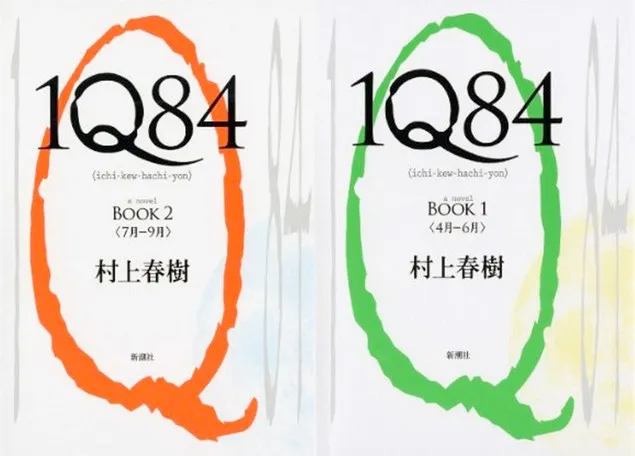
Book 2 of 1Q84
Book 2 furthers the story for us. It is where we encounter the real meat of the story as well as the relation Aomame has to Tengo. While it is intentionally vague, at least until the full scope of the story is revealed in Book 3, there are mentions of Tengo and Aomame's connection in Book 1.
In addition to being the volume that fleshes out the story, Book 2 also welcomes us as a member of this universe that Murakami has created. Book 1 keeps us at arm's length while giving us an intimate look into the characters. Book 2 has more expository information and helpful clues to the secret world of 1Q84.
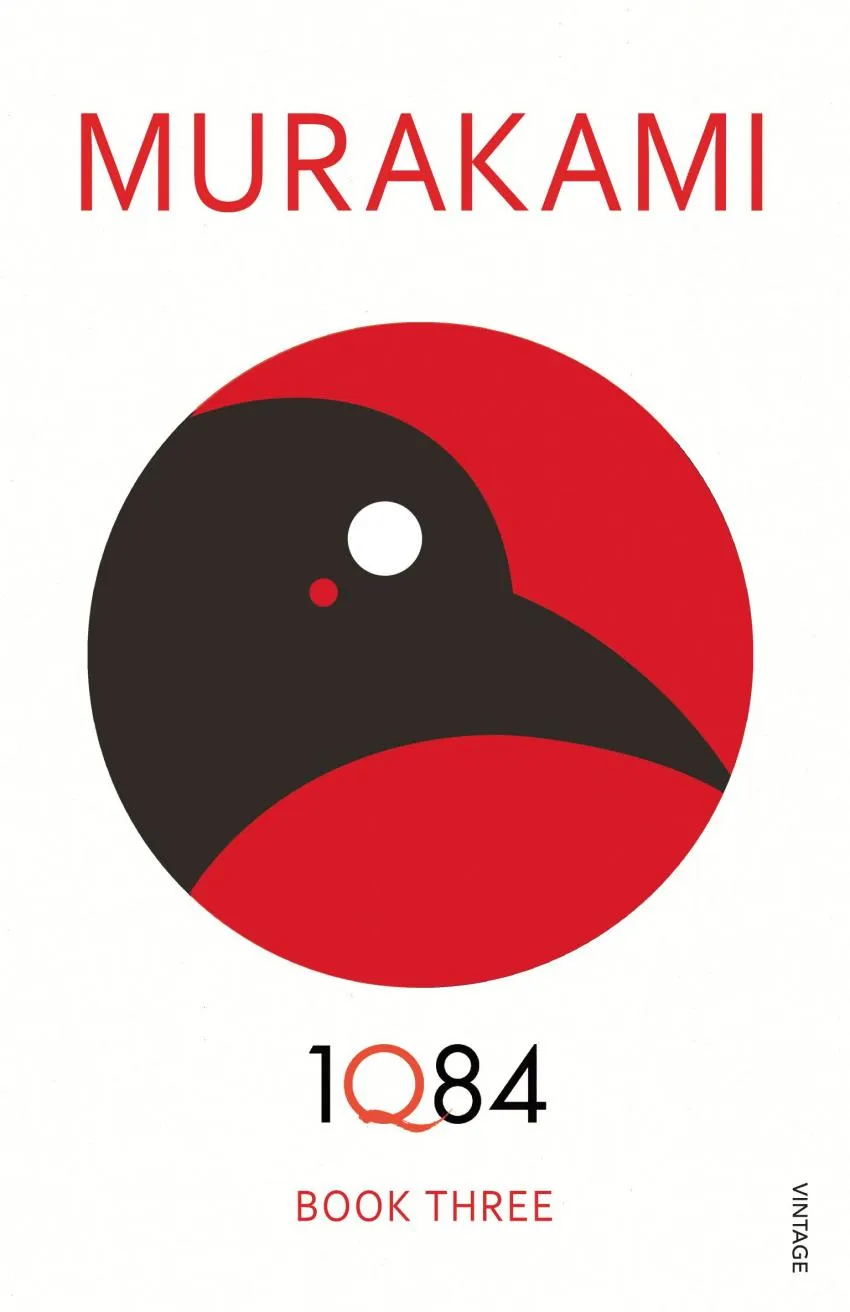
Book 3 of 1Q84
For the purposes of our spoiler-free synopsis, we are not going to go into the details of Book 3. What we will say is that in Tengo's storyline in Book 1, a great tale is set up. Tengo is a writer and teacher, and the first thing introduced in the description of his character is an opportunity for him to rewrite a prodigal girl's first novella, Air Chrysalis.
This story is slowly roped into the real plot of the story and its significance becomes clear in Book 3. However, throughout the book, while we are noticing parallels between this fictional book Air Chrysalis and the book of fiction 1Q84, we are still unsure how they connect.
Book 3 reveals the intricate details of those connections. With that being said, it is still important to let the audience know that a book of almost 1000 pages leaves plenty of questions unanswered as well. Murakami wants us to think. He wants the magical world of 1Q84 to live in our heads as nagging, thoughtful, and philosophical questions for the rest of our lives.
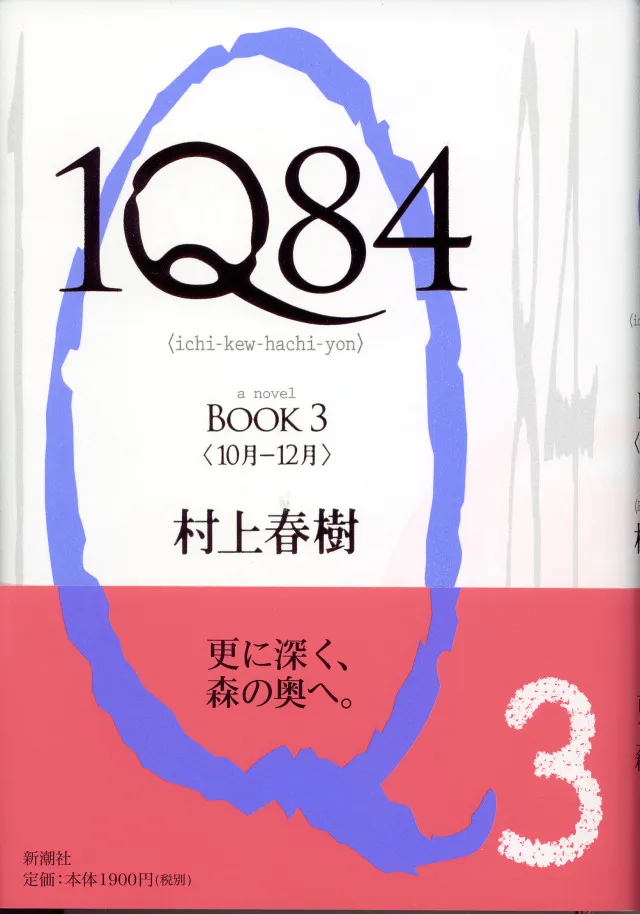
1Q84 Spoiler-Free Synopsis
Tengo and Aomame are our two main characters in 1Q84. Tengo is a teacher at a cram school in Japan, and in his free time, he writes novels and articles. He has a hard time publishing any work and the opportunity to edit Air Chrysalis is his chance to break through into the big time.
Aomame studied sports medicine and works at a health club where she does personal training. She is well-versed in self-defense and although she says she is not a feminist, she holds a special place for the protection of women in her heart. Aomame is a girl who makes it her personal responsibility to take vengeance on men who have hurt women.
Indeed, the reasons for both characters’ motivations are made abundantly clear as they navigate their parallel worlds and try to uncover the mysteries of the story. Religious cults, communist farming organizations, and odd astrological phenomena pervade the book as well, forcing us to question the reality of 1Q84.
The book is reread by many people who enjoy it, for the simple fact that a book this long takes multiple readings to fully digest. With a plot this complex, it is a hard book to spoil.
Owing to its extremely specific prose, Murakami's place in the global literary culture, as well as his undying penchant for magical realism, 1Q84 has cemented itself as one of the greatest challenges to serious readers of the 21st century.
This book is extremely rewarding to those who dedicate the time to unraveling its deep and rapacious mysteries. In other words, if you've made it this far into the article, give it a shot!
Opinions and Perspectives
I just finished 1Q84 and I'm still trying to process everything. The parallel universes and magical realism really messed with my mind in the best possible way.
It took me three months to read this book but it was worth every minute. The way Murakami weaves together Aomame and Tengo's stories is simply masterful.
I found the religious cult aspects particularly disturbing. Anyone else feel the same way?
Yes! The Little People gave me chills. I had trouble sleeping after some of those scenes.
Am I the only one who thinks this book could have been shorter? Some parts felt unnecessarily drawn out to me.
The length is part of what makes it special. You need time to get lost in that world with two moons.
I agree about the length. This book is like a slow-burning candle that needs time to reveal all its secrets.
The audiobook version really helped me get through it. Those 40+ hours flew by with the excellent narration.
I actually loved how Murakami took his time developing the characters. Felt like I really knew Aomame and Tengo by the end.
Does anyone else think a Netflix series would work better than a movie? They could do justice to all three books.
Absolutely! A streaming series would be perfect. Each book could be its own season.
I struggled with the first 200 pages but then couldn't put it down. Its like Murakami created his own genre.
The George Orwell connection in the title is brilliant. Really sets up the dystopian elements perfectly.
Not sure I agree with The Atlantic's negative review. They missed the point completely.
The way Murakami blends Western and Japanese elements is fascinating. No wonder the Japanese government calls his work un-Japanese.
Air Chrysalis is such an interesting story within the story. I keep thinking about its deeper meaning.
Anyone else catch all the music references? The jazz elements really added to the atmosphere.
Reading this made me want to explore more of Murakami's work. Starting Kafka on the Shore next.
I loved how the 1984 setting played into everything. The historical context really enriched the story.
That clear collector case set is beautiful. Definitely worth the investment for serious fans.
I was skeptical about magical realism but this book completely won me over.
The parallel narratives were confusing at first but everything clicked about halfway through.
Interesting how Murakami's Western influences shaped this story. You can really see the Vonnegut inspiration.
Aomame is such a complex character. Her story really resonated with me.
The descriptions of Tokyo in 1984 are so vivid. I felt like I was there.
Anyone else find themselves looking up at the moon differently after reading this?


